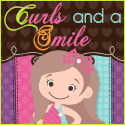Chapter 4
Increasing Comprehension By Asking Questions
I am one of the bloggers hosting! So excited!

I guess this post is more of a reflection on the specific topics/concepts the author develops. Since I am moving to a new grade, I am rethinking how I teach math and how to apply some of these ideas in second grade.
I was really interested in this chapter because my district advocates for an Inquiry Based Teaching Method. However, I am finding, at least at this point with the CORE Standards and a new math series, we are not as focused on inquiry . In the last year we have really implemented the CORE full time and the focus was overwhelmingly on building basic fact fluency and content skills. In the long run, I think my students struggled with applying content to problem solving requirements on the state test. I know that I want to work more on applying the content next year.
We \split our students across the grad level into more heterogeneous classes fro math and we have 55 minutes a day. It has drastically changed the way I teach because I only have these students for 55 minutes and most of them are not in my homeroom. It puts a lot of pressure on to use the time wisely and efficiently. It does not promote inquiry based teaching and that is really disappointing to me. I think some of the ideas in this book will really help me to make math more connected to the rest of the day for the kids, despite the fact that we form different classes for this subject.
Here are the concepts presented and my reflections:
Math as a Social Process
On page 119, Laney Sammons refers to math as a “social process”. I guess I have never seen math as a social process. I think I do need to have my students interact with each other more frequently during math. Maybe next year, since I will not be in a testing grade, I will be able to have a little bit of freedom to mix it up.
Asking questions before, during, and after working with a math problem.
Of course I think of this in reading, but not in math. It refines what I had been trying to do with my students this year and will help me support my students in developing thinking skills in math with more consistency.
Asking Questions Before Working to:
- Activate Prior Knowledge
- Develop problem solving strategies
Asking Questions During Working to:
- Determining missing information
Asking Questions After Working:
- Determining if an answer makes sense
- If the problem has been solved
Reasons to Ask Questions in Math
I like the idea of brainstorming reasons for asking questions during math – page121-124. This would be a great chart to kick of the year in math next year.
QAR
I also love the QAR reference! I think this would be really helpful to teach students for supporting problem solving, especially when approaching word problems.
Right There:
- Conceptual Questions - Using resources
- Problem-solving Questions - Information from the problem
Think and Search
- Reasons for using/learning concept
- Gathering information to solve the problem.
On my own
- How to use in real life
- Determining strategies and if a solution works
Thick an Thin Questions
Quick answer versus “Why” questions - I think teaching students the difference between computation type questions and more concept based questions would be really helpful. This would also help students to make more connections between what they are learning and to reflect on their thinking when problem solving.
Strategy Sessions
The idea of teaching small groups was a goal of my last year, but I never felt like I had the time. This will be a goal for me next year.
Wonder Walls
I use this idea in the other content areas, but need to open up my thinking to use it in math. I can see having a wonder wall and giving my students post-its to add as class ends.
"What’s the Question"
Again, another great idea! I think that teaching students how to create questions given a specific set of ideas or perimeters would really support test-taking skills. If they learn to be in control of creating questions to answer, the kids may better understand how to approach a question on an assessment.
I created a little freebie with 2 general posters, 2 strategy posters, and student bookmarks. I think they will be helpful for my students next year. Leap on over to my Teachers Pay Teachers site for your download!
Check out my co-hosts at these lovely blogs!
Also – don’t forget to follow on Bloglovin’! Click below to follow!










Thank you for the freebie. I love it! I invite to visit my post and download the freebie I created. Thanks for the great summary of Chapter 4.
ReplyDeleteMartha
2 Smart Wenches
I like how you created all the thinking stems on one page. Very student friendly!
ReplyDeleteThis rocks! Wow! You did an excellent job unwrapping this chapter! And thanks so much for these awesome freebies! LoVe them!
ReplyDeleteBrenda
Primary Inspired
Great post, and thanks for the freebie! I really like how you broke down the chapter and reflected on your own practice. Amazing.
ReplyDeleteBeth
Thinking of Teaching